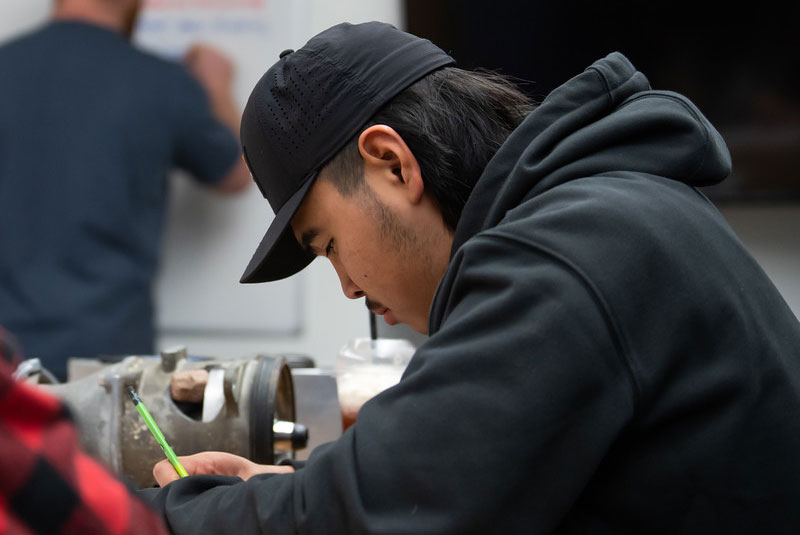Student spotlight: Susan Slocum Dyer
by Vicki Heisser |
We interviewed Susan Slocum Dyer, a participant in our Environmental Science for Teachers course. During the week-long course in Cordova, students explored environmental issues affecting Alaskan communities. We were interested in Susan's thoughts on her experience.
Please share a bit about yourself and where you teach.
Like many people, I am a puzzle with many pieces. I am a writer and a watercolor painter. My poetry has been internationally published, and my paintings have appeared in journals and books from the East to the West Coast in the United States. I write a blog about both called A Sea of Watercolors: The Diary of a Watercolor Painter and Poet.
I am the current Prose Editor at Alaska Women Speak Journal. It is a gift to read the stories of women across the state and offer them an insightful note to move their work toward publication, possibly their first. Of great significance to my life, I am a Montessori-public educator of young children and have been since 1998.
I moved from the East Coast, Boston, my home city, to Alaska in 2011. I accepted a teaching position at a Montessori School in Juneau. Since then, I have taught and lived in the most northern areas of Alaska (both in Utqiaġvik and the village of Wainwright) and the most southern, Metlakatla. I have also taught in Dillingham and Nome. I currently teach third grade at University Park Elementary School, part of the Fairbanks Northstar Borough School District.
What did you like about the course?
First impressions are always significant. Coastal Alaska is a stunning landscape. When you fly into Cordova, you know you are entering a stunning biosphere. I met most of the other teachers attending in the Anchorage Airport while waiting for our flight to Cordova. When the flight was ready to land, you could see us staring down from our window seats at the water-etched earth below. Here was our soon-to-be outdoor classroom. I was captivated!
The course itself was a puzzle with many pieces. There were lectures, art and beading lessons, outdoor investigations, and more. The outdoor investigations were keystones to the course's name, Environmental Science. Kayaking to Sheridan Glacier and eating lunch on the beach across from icebergs are experiences that will always remain with me. Hiking up to Haystack (Chugach National Forest) and spending 20 minutes sitting with 13 others nature journaling will also remain with me.
Finally, we weaved all we experienced and learned into lesson plans and presentations. I truly favored this time as I learned much from this outstanding group of Alaska educators and our skilled instructors. Each lesson was also available to download for each of us to add to our portfolios of instruction. What gifts!
The Orca Adventure Lodge was a beautiful place to stay, and the food was incredible! The staff were the radiant stars of it all.
How will it help your classroom experience and your student's success?
Place-based education is very significant to my classroom instruction. It places my students' personal history with the environment within my instruction. Alaska has a diverse topographical landscape. Metlakatla is very different than Nome, just as Fairbanks is very different from Cordova. Yet, our classroom populations include families and students from across the state. I have never given a PBE here in Alaska that didn't have one student raise their hand and jump up saying, "That's where I am from!" The more I am out in the landscape of my local community and the state, the more inclusive my lessons and classrooms are.
Standing at the shores of Prince William Sound, watching Western sandpipers dip their beaks up and down while beavers swim nearby will become a dozen stories to share with my students, inviting them to discover their own.









